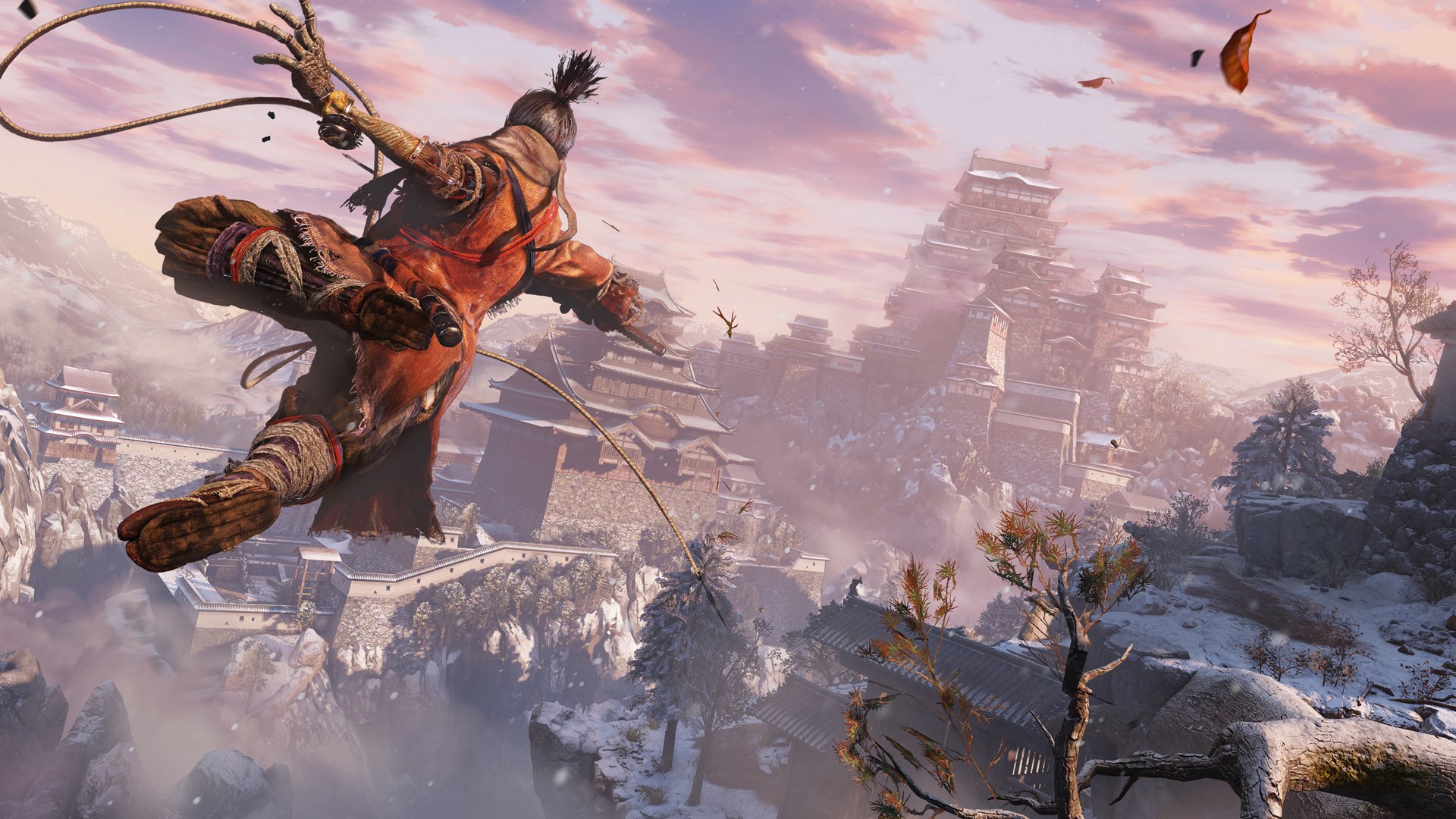I've returned to Sekiro with one question: Does it need DLC?
Opinion | Elden Ring has since stolen the show, but where does that leave the pseudo Sengoku era ARPG?

I'm perched on a rotten tree branch above a narrow thoroughfare in Sekiro: Shadows Die Twice. I could pretend I'm surveying the land below, that I'm meticulously planning my next deadly move, raining down on my foes undetected with a flurry of shuriken stars and skilled swordsmanship. But I'm not. What I'm doing is resting, catching my breath, and unsuccessfully attempting to wait out the half-dozen bloodthirsty bastards barking up at me like Tyke the dog from Tom and Jerry.
I've been here before. I've died here before, again and again and again. And having returned to Sekiro for the first time since dedicating hundreds of hours to FromSoftware's latest blockbuster adventure, Elden Ring, I can feel myself falling in love all over again. Sekiro is very clearly a FromSoftware game, and yet in the same breath it's nothing like its studio stablemates.
Beyond one complimentary update rolled out 18 months after launch, Sekiro never did receive substantial DLC. Many have argued it never needed it. But I don't agree.
Return to the light


Sekiro 2 at The Game Awards is surely nonsense – but samurai Elden Ring DLC would be ace
Much like the wider Soulsborne series that now also encompasses Elden Ring, Sekiro is bastard hard. Its waves of foes are powerful and relentless, and its combat is often fraught and frantic. But where the likes of Dark Souls and Bloodborne have a heavy focus on the role-play elements of the ARPG genre, Sekiro leans distinctly into its action mechanics. In this fictional interpretation of Japan's Sengoku period, you can run, jump, and rappel in and out of battle, stalk foes in stealth mode, and follow prompts that inform when best to attack or defend; to strike or to roll from danger. The game world is tight, winding, and often claustrophobic, which serves to complement all of the above while maintaining a constant, uniquely conflicting feeling of intrigue and dread.
The latter is, of course, the opposite of Elden Ring. FromSoftware's first attempt at a fully-realized open-world is nothing short of incredible, but that switch from vertical landscapes to horizontal sprawls has challenged the logistics of FromSoft games as we otherwise know them. Elden Ring lets you flee from the vast majority of battles if you desire, and offers more spaces to hide and escape into should you need them. After getting so used to this degree of freedom, returning to Sekiro hasn't been easy, despite the fact I'm now familiar with enemy placement and their movesets. I've found the game far more challenging than I remember – but in a 'just one more try'-type way, that makes success feel more rewarding than ever, and failure feel even more like part of the process.

"Or maybe I'm wishing for the wrong thing. Maybe a sequel is what we need instead. Whisper it. Sekiro 2: Shadows Die Thrice."
With a far more deliberate focus on narrative compared to the wider Soulsborne series, I've found myself more invested in Sekiro's story this time around too, reading and re-reading item descriptions, and combing each contained open zone to eavesdrop on whatever groups of foes that I can. In light of playing games like Sifu, where every punch, kick and block must be timed to perfection, I now find myself mapping out every single combat situation, thinking of all eventualities and considering potential escape routes should things go south. Where I once might have found elements of Sekiro stifling, I now find myself reveling in their compactness, with less in the way of distractions en route to my goal.
Ultimately, I guess what I'm saying is: I'm loving my return to Sekiro, and, as a result, I want more. I don't disagree with the players who've suggested the Sekiro base game was contained enough to not require DLC expansion content, but I also reckon that could be said of any other FromSoftware game, and the vast majority of video games more generally. Take Dark Souls 3, for example. The narrative elements introduced in its first DLC, Ashes of Ariandel, were so very light touch that I don't reckon they added much in the grand pantheon of that game's complicated lore. Its second slice of DLC, The Ringed City, on the other hand, picked up where the base game left off and offered a suitable if bleak conclusion to the Ashen One's quest.
Sign up to the GamesRadar+ Newsletter
Weekly digests, tales from the communities you love, and more
So much of what drives Sekiro is learning enemy attack patterns, knowing when to parry, when to defend, and when to strike, and so much of that is lost after the first playthrough. FromSoftware is on the cusp of launching Armored Core 6, and is presumably not too far from releasing Elden Ring's first portion of DLC, Shadow of the Erdtree, into the world. But after all of that, wouldn't it be great to return to the dev's pseudo slant on the Sengoku period? I know I'd love it, and if you wind up returning to Sekiro post-Elden Ring like me, I'm certain you'd feel the same.
Or maybe I'm wishing for the wrong thing. Maybe a sequel is what we need instead. Whisper it. Sekiro 2: Shadows Die Thrice. Title might need work, but that'd make my year.
Here are 10 games like Elden Ring for when you've conquered The Lands Between

Joe Donnelly is a sports editor from Glasgow and former features editor at GamesRadar+. A mental health advocate, Joe has written about video games and mental health for The Guardian, New Statesman, VICE, PC Gamer and many more, and believes the interactive nature of video games makes them uniquely placed to educate and inform. His book Checkpoint considers the complex intersections of video games and mental health, and was shortlisted for Scotland's National Book of the Year for non-fiction in 2021. As familiar with the streets of Los Santos as he is the west of Scotland, Joe can often be found living his best and worst lives in GTA Online and its PC role-playing scene.


